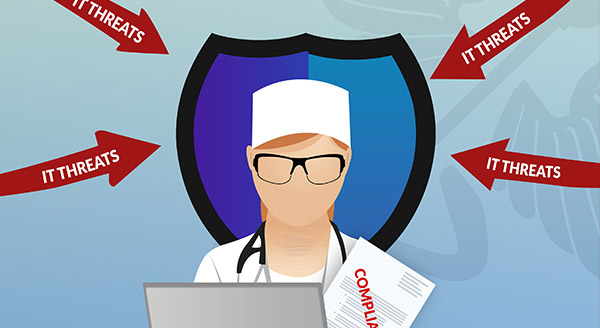

Comparing the costs of on-premiseinfrastructure to cloud infrastructure is not as simple as comparing apples toapples.
If you’re thinking about migrating yourmedical practice to the cloud,there are a number of variables to take into consideration. Evaluating youroptions for the better value means weighing the pros and cons of each, as wellas extensively calculating your total cost of ownership (TCO).
HowDoes Cloud Hosting Save You Money?
All of the articles on cloud hostingservices will talk about how switching to the cloud will save you and yourbusiness money. However, with technical considerations like third-partysoftware for printing and scanning, enterprise storage and even an upgradedinternet connection, it seems as if you'll incur more costs than you initiallythought.
So, where are the real cost savings inthis new wave of cloud computing?
No Initial Investments or Extra Set UpCosts
Transitioning from an in-house networkof computers to the cloud doesn’t require any upfront costs or investments. Thecloud serviced provider takes care of the infrastructure and set up for a fixedcost.
When you have an in-house network, youhave individual computers with individual hard drives. These need to bemaintained separately because they are not all sharing a unified server. Thismeans that you will be charged per computer set up and configuration.
You'll find that your savings come froma one-stop-shop type of set up. Your service provider only has to set up oneunified server for your entire business. That means one installation andconfiguration—one time. One cost.
Full Hardware Utilization
In the cloud, all of your employees willbe working on a shared server infrastructure. This ensures that all yourhardware resources are engaged to optimize your cloud computing efficiency.
This proves as economical, since you’reonly using one shared server and not multiple servers that may storeunnecessary information. You have the advantage of setting preferences for yourstorage needs so that your cloud server utilizes its capacity properly.
In other words, you won’t have to wastemoney continuously scaling your storage. Cloud storage only automatically saveswhat you set it up to save.
Less Power Consumption
Since cloud storage fully utilizes itshardware resources, it consumes less power. “Full utilization” may sound as ifit means more consumption, however, it means that the infrastructure’spower is used more efficiently.
Computing tasks can consume a lot ofpower, making individual servers run slower depending on the workload. Thisincreases your bottom line when you have to pay more for less in terms ofperformance.
A Reduced Work Force Expense
With cloud hosting and computing, you won’t have to rely on an internal or external IT company for maintenance. Your third-party service provider will take care of any infrastructure issues that may arise as part of your contract.
This means you’ll save on employee orcontractor salaries as well as benefits. Not to mention the cost of external ITfees per computer or device.
Built-in Redundancy
In the event of a power outage oremergency, your system may crash. To prevent this, you’ll have to purchaseextra hardware to ensure that your individual servers will still run. This endsup costing more in maintenance over time.
With cloud hosting, you won’t have to worry about needing extra hardware for redundancy. Cloud servers may spread out through multiple data centres to replicate your data. This creates resiliency, so in the event of a disaster, your systems will be up and running.
TheCosts of Managing On-Premise Servers
When we talk about on-premiseinfrastructure (or, on-prem for short), we’re talking about the physical serverat your location. This server is also managed and maintained individually byyou.
The costs of managing on-prem serversrequires a considerably large upfront capital investment. The initialinvestment covers the hardware and installation, but there are also continuous supportand maintenance expenses to consider.
In terms of your Total Cost ofOwnership (TCO),you have to take into consideration both Capital Expenditure (CapEx) andOperating Expenses (OpEx), as well as your security.
Your Capital Expenditures
As mentioned above, managing on-premiseservers means having the infrastructure at your location. This factors intobeing a fixed asset, like your office building, work vehicles, equipment, andthe maintenance required overall.
With an on-prem infrastructure, you alsohave to take into consideration the cost for your servers, power systems,storage, hardware, software, and licensing—as well as the installations,upgrades and maintenance.
A large capital expenditure can place a strain on your organization’s finances, which could end up taking away from more critical initiatives.
You also have to replace this hardware every 3 to 5 years.
Your Operating Expenses:
Many people will put their OpEx in thecloud category, however any ongoing costs to running a business or organizationfalls under this category..
Any items that are accounted and paidfor monthly are your operating expenses, which is why most people findmigrating to the cloud a much more cost-effective option since there is a smalloverhead.
While the cloud won’t eliminate certaincosts like hardware, software, support staff, etc., it will still reduce themsubstantially.
Security:
The pros and cons of on-prem vs cloudsecurity tend to weight the same.
Your on-prem security will be limited toyour enterprise licensing and any other security measures you decide to take atcost. Your security isn’t automated, and so your organization is solelyresponsible.
Cloud security continues to evolve withdynamic resources, but can still be risky due to ephemeral security boundaries.However, cloud security is sharedsecurity. That means that the securityresponsibility is shared among your organization and your cloud serviceprovider.
Security is something that is oftenoverlooked, but can be costly when left vulnerable in either case.
Migrationhas its Advantages
Migrating to the cloud isn’t just aboutsaving money. It’s also about the efficiency and all of the benefits from aremote infrastructure.
If you’re thinking about migrating your medical practice to the cloud, the IT experts at Greenlight ITC can answer all of your questions.